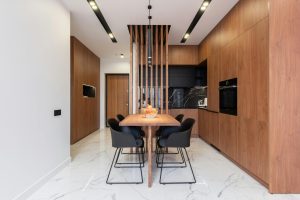Wellness-Focused Home Design: Creating Healthier Living Spaces
Welcome to a new era of home design – one that puts your health and well-being at the forefront. For too long, homes have been designed solely for functionality and aesthetics, neglecting the impact they have on our physical and mental health. But now, with the rise of wellness-focused living, people are rethinking the way they approach home design. From incorporating natural elements to optimizing indoor air quality, there are endless ways to create a healthier living space. In this article, we will explore the concept of wellness-focused home design and how you can implement it in your own home. Get ready to transform your living space into a sanctuary for a healthier, happier you.
The Importance of Wellness-Focused Home Design
Before we dive into the specifics, let’s first understand why wellness-focused home design is so important. Our homes are where we spend most of our time, and the environment we live in can have a significant impact on our physical, mental, and emotional well-being. According to the World Health Organization, the quality of our indoor environment can affect our respiratory, cardiovascular, and immune systems, as well as our cognitive function.
Moreover, with the rise of sedentary and stressful lifestyles, it becomes even more critical to create a home that promotes health and wellness. But what exactly does wellness-focused home design entail? Let’s find out.
Nature-Inspired Living Spaces
Nature is the ultimate source of inspiration for wellness-focused home design. Bringing natural elements into your living space can have a calming and grounding effect, reducing stress and promoting relaxation. Consider incorporating indoor plants, natural materials like wood and stone, and elements like natural light and views of nature into your home design.
Biophilic Design
A popular concept in wellness-focused home design is biophilic design, which involves creating a connection between humans and nature within built environments. This can include incorporating elements such as water features, living walls, and natural lighting to mimic the feeling of being outdoors. Biophilic design has been proven to reduce stress, improve cognitive function, and promote overall well-being.
Clean Indoor Air Quality
Poor indoor air quality can have serious health consequences, leading to respiratory issues, allergies, and other health problems. Therefore, it is crucial to prioritize clean indoor air in your home design. Start by choosing low-VOC (volatile organic compounds) materials for furniture, flooring, and paint. These chemicals can release harmful gases into the air, negatively affecting indoor air quality.
Invest in an air purification system to remove pollutants from the air. You can also consider incorporating indoor plants that act as natural air purifiers, absorbing harmful chemicals and producing oxygen.
Ergonomic Design
Ergonomics is the science of designing products or environments that fit the needs of the human body, promoting comfort and efficiency. In the context of home design, it means creating a space that supports your body’s natural movements and reduces strain and fatigue. From choosing ergonomic furniture to optimizing the layout of your living space, there are many ways to incorporate this concept into your home design.
Well-Designed Workspaces
In today’s digital age, many people are working remotely, and having a designated workspace at home is essential. But sitting for long periods can cause a host of health issues. Designing a workspace that promotes movement and good posture can go a long way in improving your overall well-being. Consider investing in a standing desk or ergonomic chair, and take breaks to stretch and move throughout the day.
A Space for Mindfulness
Incorporating areas for mindfulness in your home is another way to promote wellness. This can be a space for meditation, yoga, or simply a quiet reading nook. Designing a dedicated space for mindfulness can help reduce stress, improve mental clarity, and promote a sense of calm and relaxation in your home.
Smart Lighting
The lighting in your home can have a significant impact on your mood and energy levels. Consider incorporating smart lighting systems that allow you to adjust the intensity and color of the light to suit your needs. You can also choose warm, natural light bulbs to mimic the sun’s natural light, promoting better sleep and reducing eye strain.
In Conclusion
Wellness-focused home design is not just about creating a beautiful living space; it’s about creating a space that supports your physical, mental, and emotional well-being. By incorporating elements of nature, promoting clean indoor air, and designing for ergonomics and mindfulness, you can create a home that truly nourishes and rejuvenates you. So why not start now and make your home a sanctuary for a healthier, happier you.










